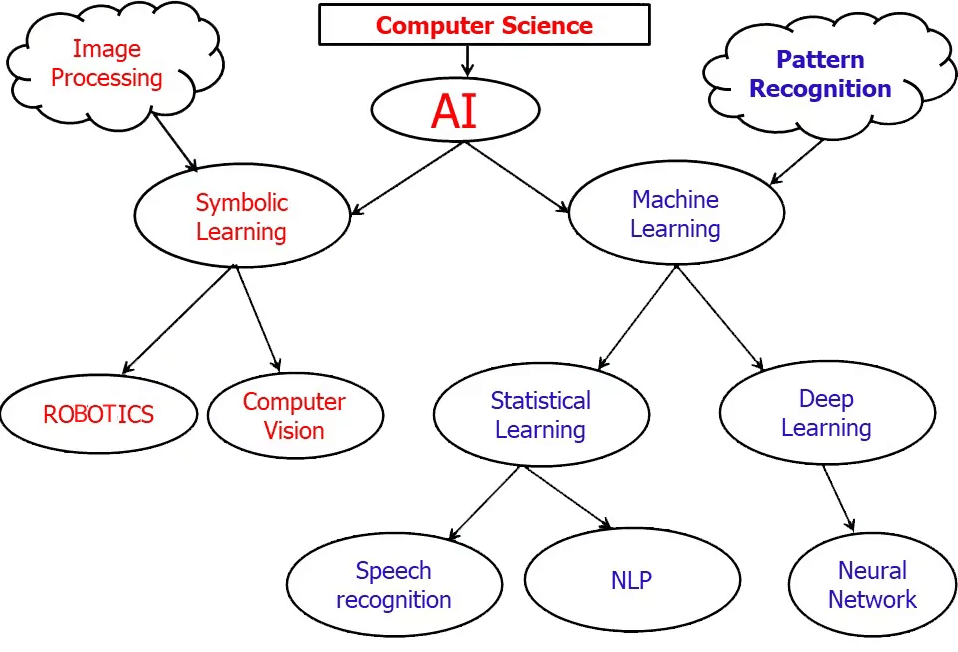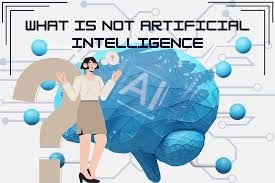What is Artificial Intelligence? | Artificial Intelligence for Class 10 PDF Download
| Table of contents |

|
| What is Artificial Intelligence? |

|
| What is Not Artificial Intelligence? |

|
| AI vs Automation |

|
| How to say a machine is AI |

|
What is Artificial Intelligence?

Artificial Intelligence (AI) has always intrigued people all over the world. It refers to the ability of machines to perform cognitive tasks like thinking, perceiving, learning, problem solving, and decision making.
Definitions
Artificial Intelligence (AI) is inspired by the ways people use their brains to perceive, learn, reason out, and decide actions.
Various Definitions of AI
NITI Aayog: National Strategy for Artificial Intelligence
- AI refers to the ability of machines to perform cognitive tasks like thinking, perceiving, learning, problem-solving, and decision-making. Initially conceived as a technology that could mimic human intelligence, AI has evolved in ways that far exceed its original conception.
- With incredible advances made in data collection, processing, and computation power, intelligent systems can now be deployed to take over a variety of tasks, enable connectivity, and enhance productivity.
World Economic Forum
- Artificial intelligence (AI) is the software engine that drives the Fourth Industrial Revolution. Its impact can already be seen in homes, businesses, and political processes.
- In its embodied form of robots, it will soon be driving cars, stocking warehouses, and caring for the young and elderly. It holds the promise of solving some of the most pressing issues facing society, but also presents challenges such as inscrutable “black box” algorithms, unethical use of data, and potential job displacement.
- As rapid advances in machine learning (ML) increase the scope and scale of AI’s deployment across all aspects of daily life, and as the technology itself can learn and change on its own, multi-stakeholder collaboration is required to optimize accountability, transparency, privacy, and impartiality to create trust.
European AI Leadership: The Path for an Integrated Vision
- AI is not a well-defined technology and no universally agreed definition exists. It is rather a cover term for techniques associated with data analysis and pattern recognition.
- AI is not a new technology, having existed since the 1950s. While some markets, sectors, and individual businesses are more advanced than others, AI is still at a relatively early stage of development, so the range of potential applications and the quality of most existing applications have ample margins left for further development and improvement.
Encyclopedia Britannica
- Artificial intelligence (AI) is the ability of a digital computer or computer-controlled robot to perform tasks commonly associated with intelligent beings.
- The term is frequently applied to the project of developing systems endowed with the intellectual processes characteristic of humans, such as the ability to reason, discover meaning, generalize, or learn from past experience.
What is Not Artificial Intelligence?

Given the myriad of technologies in use today, it's easy to misidentify various technologies as AI. To avoid confusion, it's crucial to distinguish what constitutes AI from what does not.
Distinguishing AI from Other Technologies
- Defining AI:
- Training with Data: A core component of AI is the training process. AI systems are trained using large datasets to learn patterns, make decisions, and generate predictions.
- Autonomy in Decision-Making: After training, AI systems can operate independently, making decisions or predictions without human intervention.
- What is Not AI:
- Rule-Based Systems: Technologies that operate solely based on predefined rules or algorithms without the ability to learn from data.
- Traditional Software: Software that performs tasks based on specific, hard-coded instructions provided by human programmers.
- Automation Tools: Systems that follow a fixed set of instructions to perform repetitive tasks without the capability to learn or adapt from data inputs.
- Key Characteristics of AI:
- Learning and Adaptation: AI systems improve over time by learning from new data.
- Pattern Recognition: AI can identify complex patterns within data that are not easily discernible by humans.
- Decision-Making: AI can make decisions based on its learning and analysis, often in real-time.
- Predictive Analysis: AI systems can predict outcomes based on historical data and trends.
By understanding these characteristics, we can better identify true AI systems and distinguish them from other technologies that do not possess these capabilities.
AI vs Automation
Clarifying AI vs. Other Technologies
- Washing Machine:
- Automation, Not AI: A fully automatic washing machine operates based on user-selected parameters and performs tasks without further human intervention. However, it lacks the ability to learn or adapt from data, distinguishing it as an automation device rather than AI.
- Air Conditioner:
- Internet of Things (IoT): An air conditioner that can be controlled remotely via the internet exemplifies IoT. It connects devices for remote operation but lacks AI's learning and decision-making capabilities.
Distinguishing Automation and Smart Devices from AI
- Automation Projects: Many automation projects use sensors to control environments but do not involve training with data. These systems are designed to perform specific tasks based on predefined rules or sensor inputs and are not considered AI.
- Smart Devices: Not all smart devices are AI-enabled. For example, a smart TV becomes AI-enabled only if it can think and process information autonomously.
The Essence of AI
Training and Adaptation:
- Human-Like Learning: Similar to how humans learn and improve skills through experiences, AI systems are trained on data and then refine their performance based on new data and experiences.
- Data-Driven Optimization: AI's ability to learn from data and optimize itself distinguishes it from other technologies.
Integration of AI with Other Technologies
- Robotics and AI:
- Humanoids and Self-Driving Cars: Combining robotics with AI can lead to advanced applications like humanoid robots and autonomous vehicles.
- Enhanced IoT with AI: Merging AI with IoT can enable cloud computing, data analysis, and remote access to AI tools.
- Automation and AI:
- Voice Automated Homes: Integrating AI with automation can create sophisticated voice-controlled environments, enhancing user experiences.
How to say a machine is AI
A machine is considered to be AI if it can apply the following three domains:
- Data:
- Data Handling and Analysis: AI systems must be capable of handling large datasets, analyzing patterns, and making predictions or decisions based on that data.
- Machine Learning: Utilizing algorithms to learn from data and improve performance over time without being explicitly programmed for every task.
- Computer Vision:
- Image and Video Analysis: The ability to interpret and understand visual information from the world, such as recognizing objects, detecting anomalies, and understanding scenes.
- Facial Recognition and Object Detection: Specific applications of computer vision where the AI can identify and classify objects or faces in images or videos.
- Natural Language Processing (NLP):
- Understanding and Generating Human Language: The ability to process, understand, and generate human language in a way that is both meaningful and useful.
- Applications: This includes tasks like language translation, sentiment analysis, speech recognition, and chatbot interactions.
|
26 videos|88 docs|8 tests
|
FAQs on What is Artificial Intelligence? - Artificial Intelligence for Class 10
| 1. What is Artificial Intelligence (AI)? |  |
| 2. What is not considered Artificial Intelligence? |  |
| 3. How does AI differ from automation? |  |
| 4. How can we determine if a machine is AI? |  |
| 5. What are some common applications of Artificial Intelligence? |  |




















